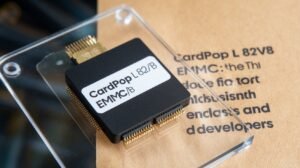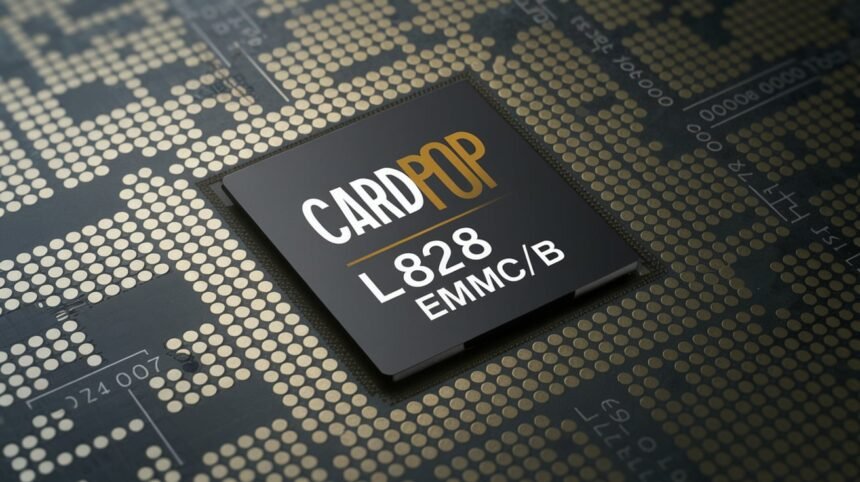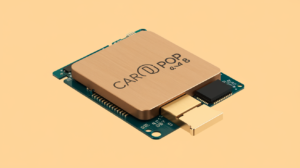Certain technologies in electronic components and hardware stand out for their versatility and performance. One such component is the Cardpop L 82v8 emmc/b. This device has gained attention for its efficiency and widespread applications. Whether you’re a tech enthusiast, a developer, or just getting started with hardware, understanding the Cardpop L 82v8 emmc/b is essential.
In this article, we’ll dive deep into the specifications, uses, and advantages of the Cardpop L 82v8 and why it is becoming a popular choice among tech professionals. Let’s explore everything you need to know about this device.
What is Cardpop L 82v8 emmc/b?
It is a type of embedded multimedia card (eMMC), which is used for storage purposes in a wide variety of devices. The term eMMC refers to a type of flash memory that comes with a controller, all packaged in a single chip. The Cardpop L 82v8 emmc/b offers reliable storage solutions for devices like smartphones, tablets, laptops, and even some industrial equipment.
The primary reason for the popularity of the Cardpop L 82v8 is its compact size and the integration of both memory and controller. This feature allows for better management of storage without compromising on space, making it ideal for mobile devices and other compact electronics.
Performance of Cardpop L 82v8 emmc/b
One of the key selling points of the Cardpop L 82v8 emmc/b is its performance. The device is designed to offer fast data transfer speeds, making it suitable for applications that require quick access to large amounts of data. Whether you’re transferring files, streaming videos, or running software applications, it ensures smooth and uninterrupted performance.
The Cardpop L 82v8 excels in read and write speeds, which are critical for tasks such as booting up an operating system, loading applications, or storing large files. The performance of this component significantly reduces lag times, making it a preferred choice for high-performance devices. With the Cardpop L 82v8 , users can expect faster processing times, fewer delays, and overall improved efficiency.
Why Choose Cardpop L 82v8 emmc/b?

There are several reasons why the Cardpop L 82v8 stands out in the market. First, it offers a great balance between performance and cost. It provides excellent storage capabilities without being as expensive as other storage options like SSDs. This makes it a highly cost-effective solution for manufacturers and end-users alike.
Second, it is highly durable. The eMMC technology is known for its longevity and reliability. Devices equipped with Cardpop L 82v8 emmc/b can withstand extended usage, making them suitable for industrial applications as well. Durability is an important consideration, especially for products expected to last over long periods without failure.
Lastly, it is easy to integrate into a wide range of systems. The compact size and the all-in-one nature of the device mean that it can be used in smartphones, tablets, IoT devices, and more without requiring too much space. The Cardpop L 82v8 also supports multiple interfaces, allowing for flexible integration across various platforms.
Cardpop L 82v8 emmc/b vs. Other Storage Solutions
When comparing the Cardpop L 82v8 emmc/b to other storage solutions, it is important to consider its unique features. Unlike traditional hard drives, the Cardpop L 82v8 is flash-based, meaning there are no moving parts. This results in faster access times and a lower risk of physical damage due to drops or vibrations.
Compared to SSDs (Solid State Drives), the Cardpop L 82v8 emmc/b is more affordable, though it may not reach the same high performance in terms of speed. However, for most consumer electronics, the speed offered by the Cardpop L 82v8 emmc/b is more than sufficient. Additionally, SSDs are often too large or too costly for devices like smartphones or tablets, making the Cardpop L 82v8 a better choice in these cases.
Another advantage of the Cardpop L 82v8 emmc/b is its power efficiency. Since it consumes less power compared to traditional hard drives and SSDs, it helps to extend the battery life of mobile devices. This makes it ideal for portable electronics where long battery life is a key consideration.
Applications of Cardpop L 82v8 emmc/b
It has a broad range of applications. In mobile devices, it acts as the primary storage, holding the operating system, applications, and user data. In industrial and IoT applications, the Cardpop L 82v8 is used for data logging, system monitoring, and running embedded systems.
In addition to these, the Cardpop L 82v8 is often used in automotive electronics, digital cameras, and gaming consoles. Its compact size, durability, and performance make it an ideal choice for devices that require reliable storage solutions but cannot accommodate larger or more expensive options.
Future of Cardpop L 82v8 emmc/b

As technology continues to evolve, the role of the Cardpop L 82v8 will likely expand. With the rise of 5G networks, the Internet of Things (IoT), and smart devices, the demand for fast, reliable storage solutions like the Cardpop L 82v8 will only increase. Its combination of speed, cost-efficiency, and compact design positions it as a key player in the future of digital storage.
Manufacturers are constantly looking for ways to improve it, and we can expect enhancements in terms of capacity, speed, and durability in the coming years. As devices become more complex and data demands continue to grow, it will play a crucial role in meeting these challenges.
Conclusion
It is a versatile and reliable storage solution that has found its place in a wide variety of devices. Its balance of performance, cost, and durability makes it a preferred choice for both consumer electronics and industrial applications. Whether you’re looking for a storage solution for a mobile device, IoT system, or other hardware, it offers an excellent option.
As technology advances, the Cardpop L 82v8 emmc/b will likely continue to evolve and improve, making it an essential component in the future of digital storage. Understanding its features and benefits can help users make informed decisions when choosing storage solutions for their devices.




